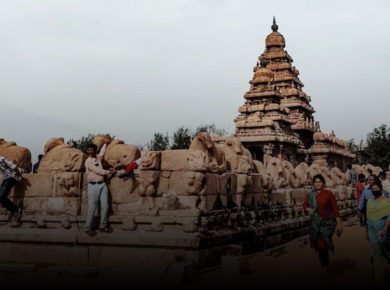Deccan Style Architecture
Hyderabad School
Qutub Shahi and Nizam Shahi dynasties contributed greatly towards the development of the Deccan style of architecture.
- Charminar (1591) – Mohammed Quli Qutb Shah
- Mecca Masjid- started in 1614 by Abdullah Qutub Shah and completed in 1687 by Aurangzeb.
- Golconda Fort (1525) – Mohammed Quli Qutb Shah, was an impregnable fort of great strategic importance to most of the rulers.
- Falaknuma Palace (1870) by Nawab Vikar-Ul-Ulmara, is a rare blend of Italian and Tudor architecture.
Bijapur School (Karnataka)
- Developed during the reign of Adilshah [arr] most important example is Gol Gumbaz
- Gol Gumbaz of Bijapur is the mausoleum of Muhammad Adil Shah (1627- 57)
- It is the largest dome cubicle in the world covering a total interior surface of over 1600 sq. meters
- Its underground vaults consist of a square grave chamber and a large single square chamber above the ground
- Prominent feature [arr] Large hemispherical dome surmounting it & seven storied octagonal towers on its corners
- Each of its walls on the outside are divided into three recessed arches
- A 3.4 m wide gallery rests on its interior, known as the whispering gallery, as even a whisper here reverberates as an echo under the dome.
- The large dome is hemispherical & is covered with a row of petals at the base.











